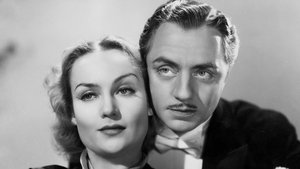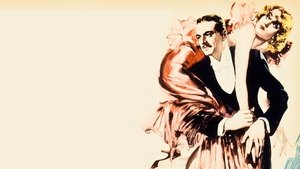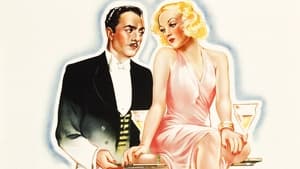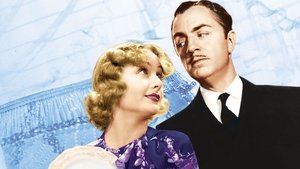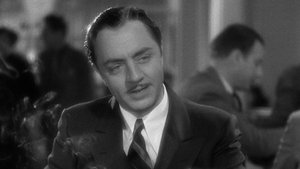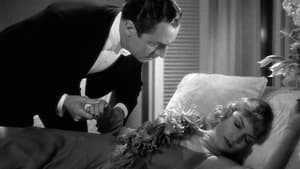Video Sources 0 Views
- Watch trailer
- My Man Godfrey 1936 Colorized

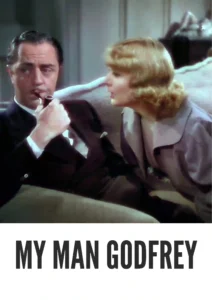
Synopsis
Table of Contents
ToggleHigh Society Meets the Forgotten Man: My Man Godfrey (1936) in Vibrant Color

Step back into the glamorous world of 1930s New York with My Man Godfrey, a sparkling screwball comedy from 1936, now beautifully colorized for a viewing experience like never before. This film, directed by Gregory La Cava, delivers a witty and heartwarming tale of social satire and unexpected romance. Perfect for fans of classic comedies and those seeking a glimpse into the Golden Age of Hollywood, this HD download brings a timeless story to your screen. Also known as What a Man!
My Man Godfrey Storyline: A Depression-Era Fairy Tale
My Man Godfrey tells the story of Godfrey (William Powell), a sophisticated and well-educated man living as a “forgotten man” at the city dump during the Great Depression. His life takes an unexpected turn when he encounters Irene Bullock (Carole Lombard), a wealthy and eccentric socialite participating in a scavenger hunt.Irene impulsively hires Godfrey as the family butler, much to the dismay of her spoiled sister Cornelia (Gail Patrick) and her exasperated mother, Angelica (Alice Brady). As Godfrey navigates the absurdities of the Bullock household, he brings order and wisdom to their chaotic lives, while also capturing Irene’s heart. However, Godfrey harbors a secret about his past that could jeopardize his newfound happiness. The film explores themes of class, social responsibility, and the transformative power of kindness, all wrapped in a delightful comedic package.
Movie Cast
The film features a stellar cast of actors who bring these memorable characters to life:
- William Powell as Godfrey
- Carole Lombard as Irene Bullock
- Gail Patrick as Cornelia Bullock
- Alice Brady as Angelica Bullock
- Eugene Pallette as Alexander Bullock
Movie Genre
My Man Godfrey falls into the genre of screwball comedy, a subgenre known for its fast-paced dialogue, witty banter, and unconventional characters. The film also incorporates elements of social satire, offering a sharp critique of wealth and privilege during the Depression era.
Historical Context: The Great Depression and Hollywood’s Golden Age
Released in 1936, My Man Godfrey reflects the social and economic realities of the Great Depression, while also offering an escape from those hardships through its lighthearted and optimistic tone. The film was produced during Hollywood’s Golden Age, a period of unparalleled creativity and innovation in American cinema. My Man Godfrey is considered one of the finest examples of screwball comedy from this era, showcasing the genre’s ability to blend humor with social commentary.
Colorization Details
This colorized version of My Man Godfrey has been meticulously restored using modern digital techniques, enhancing the visual appeal while preserving the film’s original charm and wit. The colorization process involved carefully analyzing the grayscale tones of the original black and white footage and assigning appropriate colors to each scene. While the specific software used remains proprietary, the techniques employed included advanced algorithms for color palette selection and image enhancement. This painstaking process brings new life to the characters and settings, making the story even more engaging for modern audiences. While some may debate the merits of colorizing classic films, it introduces these films to a broader audience, ensuring their legacy for future generations.
Technical Details
- Director: Gregory La Cava
- Screenplay: Eric Hatch, Morrie Ryskind
- Based on: 1101 Park Avenue, a story by Eric Hatch
- Cinematography: Ted Tetzlaff
- Edited by: Ted Tetzlaff
- Production Company: Universal Pictures
- Distributed by: Universal Pictures
- Runtime: 94 minutes
Technical Specifications
- Download Format: MP4
- Resolution: HD (1080p)
- Compatibility: Compatible with most devices, including smartphones, tablets, computers, and smart TVs.
Reviews and Critical Reception
My Man Godfrey (1936) is widely regarded as a classic of the screwball comedy genre, earning praise for its witty script, sharp social commentary, and outstanding performances by William Powell and Carole Lombard. The film was nominated for six Academy Awards, solidifying its place in cinematic history. As a timeless and entertaining masterpiece, My Man Godfrey continues to delight audiences with its humor, heart, and enduring relevance.
FAQs
- Q: What is My Man Godfrey about?
- A: My Man Godfrey is a screwball comedy about a “forgotten man” who becomes a butler for a wealthy and eccentric family.
- Q: Is My Man Godfrey (1936) a well-regarded classic film?
- A: Yes, My Man Godfrey is considered one of the finest examples of screwball comedy from Hollywood’s Golden Age.
- Q: Is this version of My Man Godfrey colorized?
- A: Yes, this version has been professionally colorized to enhance the viewing experience.
- Q: What makes My Man Godfrey interesting for classic film fans?
- A: My Man Godfrey offers a glimpse into the social and economic realities of the Great Depression, while also providing an escape through its humor and wit.
- Q: What is the download format?
- A: The download format is MP4, which is compatible with most devices.
- Q: What resolution is the download?
- A: The resolution is HD (1080p), providing a high-quality viewing experience.
Download Now in HD!
Watch My Man Godfrey Today!
